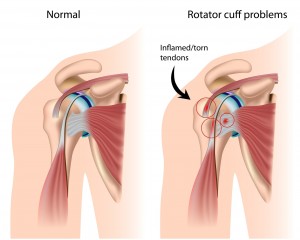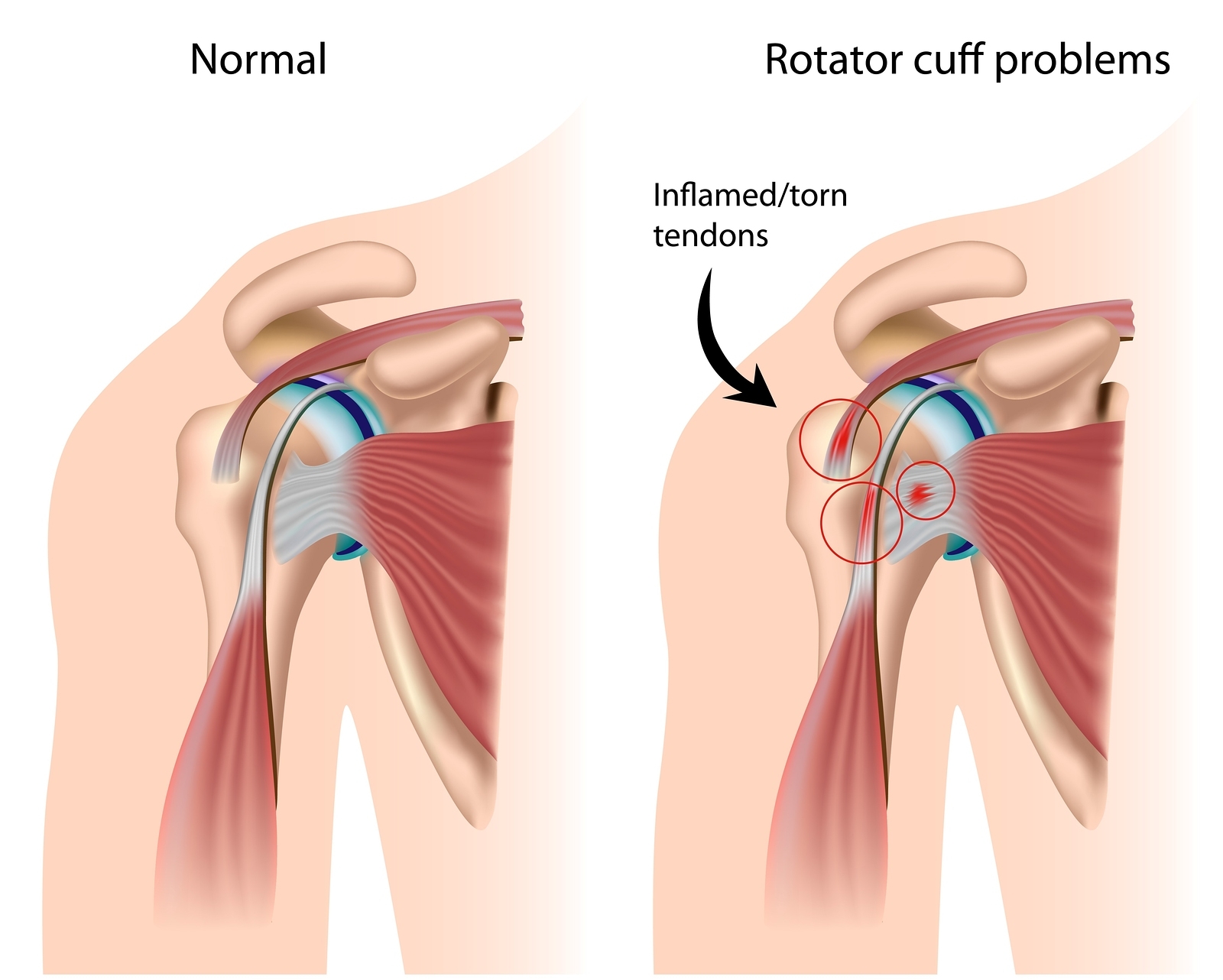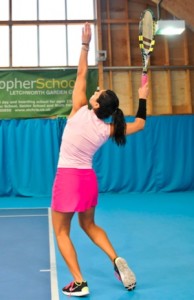Over the last 8 years or so, I have worked with a number of athletes with shoulder impingement syndrome including some who had been told that their career was over following multiple surgeries. In particular, I have worked with tennis players and swimmers to help them with their shoulder pain.
Impingement syndrome (also known as Swimmer’s Shoulder or Thrower’s Shoulder) occurs when the rotator cuff tendons become impinged or trapped between the acromion process of the scapula and the head of the humerus.
Continued impingement leads to inflammation and tenderness of the rotator cuff tendons particularly the supraspinatus tendon.
If impingement syndrome continues, it can lead to rotator cuff strain.
Overhead sports such as baseball, racket sports, cricket, volleyball and swimming are the most vulnerable due to their frequent, fast and powerful overarm movements.
So What Symptoms Do You Get With Impingement Syndrome?
Symptoms associated with Impingement Syndrome include pain, weakness and loss of movement in the affected arm. Over-arm activities will exacerbate the symptoms and range of motion of the shoulder may be limited.
Causes:
 Shoulder Impingement Syndrome (SIS) is often caused by an Upper Cross Syndrome, which is the classic rounded-shoulder posture which often has internal rotation of the shoulder joint. The Upper Cross Syndrome reduces the space between the head of the humerus (shoulder joint) and the acromion process (part of the shoulder blade). Therefore, when the arm is raised above the head the rotator cuff tendons, particularly the supraspinatus tendon becomes trapped, inflamed and eventually torn.
Shoulder Impingement Syndrome (SIS) is often caused by an Upper Cross Syndrome, which is the classic rounded-shoulder posture which often has internal rotation of the shoulder joint. The Upper Cross Syndrome reduces the space between the head of the humerus (shoulder joint) and the acromion process (part of the shoulder blade). Therefore, when the arm is raised above the head the rotator cuff tendons, particularly the supraspinatus tendon becomes trapped, inflamed and eventually torn.
Bone spurs, which are bony protrusions, can sometimes be found on the underside of the clavicle (collar bone). These bone spurs can be sharp and as the muscle or tendon moves across the spur, it causes trauma to the muscle or tendon causing it to become weaker and over time with further stress, to tear.
Shoulder joint instability can also cause SIS. When a shoulder joint is unstable, it is unable to maintain what is known as an Optimum Instantaneous Axis of Rotation (OIAS). What this means is that when a joint has OIAR, all the muscles and ligaments surrounding the joint are at their optimal length and they keep the joint in its optimum position as it moves. However, when a joint is unstable the muscles and possibly ligaments are long and weak on one side of the joint and excessively tight on the other. This results in an axis of rotation around the joint that is not optimal. This leads to wear and tear of soft tissues (muscles, tendons and ligaments) of the joint leading to rotator cuff tear in the shoulder amongst other potential injuries such a labrum tear.
Stay tuned to find out what you can do to rehabilitate shoulder impingement syndrome…


